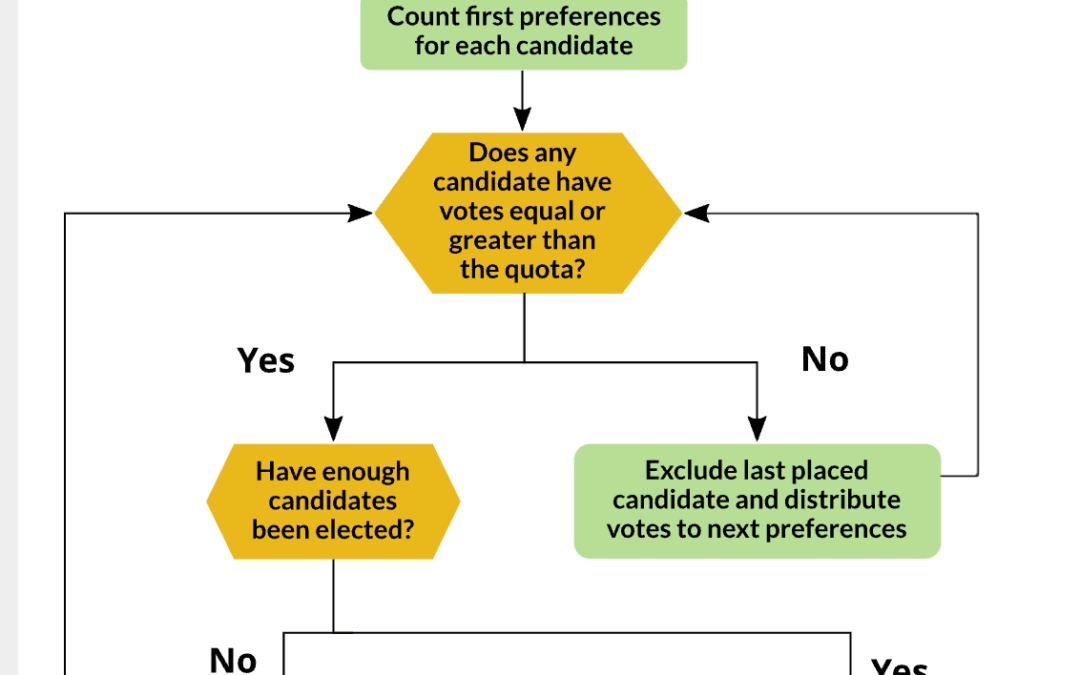Under STV – (Single Tranferable Vote) systems each voter gets to rank candidates in order of preference. This is how votes are counted under STV. Typically you would be asked to place a number beside each candidate. To win each STV candidate needs to reach a threshold level which is usually more than half the votes to win.
Sometimes the election is for multiple seats. Then the counting is more complicated and a quota system is used. That quota is calculated by using a formula. The two most often used are called the Hare or Droop. These formulas can look complicated and the actual vote counting process invoves multiple rounds of calculation. This is because votes for a particular candidate above that quota number are deemed to be surplus. Those surplus votes then get transferred to the next highest polling candidate and so on until each position is filled.
STV was used for District Health Board elections until these Boards were disestablished. And local elections for 15 areas are currently using STV voting. Part of the thinking is too avoid “wasted votes”. The Invercargill City Council researched STV in 2023. Their definition of “wasted votes” is below.
“Research on electoral systems labels any vote that does not help to elect a candidate as ‘wasted’. This is different to the typical meaning of something being a waste. For example, the votes for candidates who are not elected are described as ‘wasted’. Likewise, the surplus votes a candidate receives, over and above the number they need to be elected, are also said to be ‘wasted’. The FPP voting system produces more of this type of ‘wasted’ vote than STV.”
In the private sector, Fonterra use STV for their Board of Directors and Shareholders’ Council elections. DairyNZ’s Board of Directors and the Victoria University’s Court of Convocation also use STV. Internet NZ also uses STV voting for elections. Overseas, STV has been around since the 1850s.
The diagram shows How votes are counted under STV.


Recent Comments